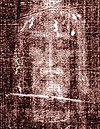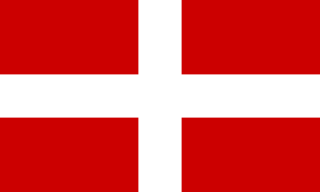
Savoy is a cultural-historical region in the Western Alps. Situated on the cultural boundary between Occitania and Piedmont, the area extends from Lake Geneva in the north to the Dauphiné in the south and west and to the Aosta Valley in the east.

The House of Savoy is an Italian royal house that was established in 1003 in the historical Savoy region. Through gradual expansion, the family grew in power from ruling a small Alpine county north-west of Italy to absolute rule of the Kingdom of Sicily from 1713 to 1720, when they were handed the island of Sardinia, over which they would exercise direct rule from then onward.
A number of alleged relics associated with Jesus have been displayed throughout the history of Christianity. While some individuals believe in the authenticity of Jesus relics, others doubt their validity. For instance, the sixteenth-century philosopher Erasmus wrote about the proliferation of relics, and the number of buildings that could be constructed from wooden relics claimed to be from the crucifixion cross of Jesus. Similarly, at least thirty Holy Nails were venerated as relics across Europe in the early 20th century. Part of the relics are included in the so-called Arma Christi, or the Instruments of the Passion.

Turin Cathedral is a Roman Catholic cathedral in Turin, northern Italy. Dedicated to Saint John the Baptist. It is the seat of the Archbishops of Turin.

The Shroud of Turin, also known as the Holy Shroud, is a length of linen cloth that bears a faint image of the front and back of a man. It has been venerated for centuries, especially by members of the Catholic Church, as the actual burial shroud used to wrap the body of Jesus of Nazareth after his crucifixion, and upon which Jesus's bodily image is miraculously imprinted. The human image on the shroud can be discerned more clearly in a black and white photographic negative than in its natural sepia color, an effect discovered in 1898 by Secondo Pia, who produced the first photographs of the shroud. This negative image is associated with a popular Catholic devotion to the Holy Face of Jesus.
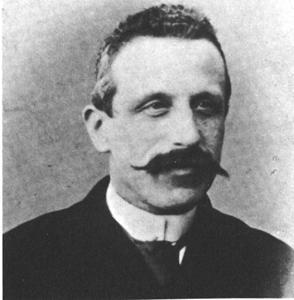
Secondo Pia was an Italian lawyer and amateur photographer. He is best known for taking the first photographs of the Shroud of Turin on 28 May 1898 and, when he was developing them, noticing that the photographic negatives showed a positive image of the man in the shroud in addition to a clearer rendition of the image. The image he obtained from the shroud has been approved by the Roman Catholic Church as part of the devotion to the Holy Face of Jesus.
Raymond N. Rogers was an American chemist who was considered a leading expert in thermal analysis. To the general public, however, he was best known for his work on the Shroud of Turin.

The Castle of Moncalieri is a palace in Moncalieri, Piedmont, in northern Italy. It is one of the Residences of the Royal House of Savoy listed by UNESCO as World Heritage Sites in 1997.

The Royal Palace of Turin is a historic palace of the House of Savoy in the city of Turin in Northern Italy. It was originally built in the 16th century and was later modernized by Christine Marie of France (1606–1663) in the 17th century, with designs by the Baroque architect Filippo Juvarra. The palace also includes the Palazzo Chiablese and the Chapel of the Holy Shroud, the latter of which was built to house the famous Shroud of Turin.
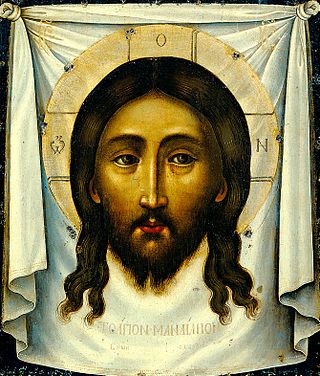
Acheiropoieta — also called icons made without hands — are Christian icons which are said to have come into existence miraculously; not created by a human. Invariably these are images of Jesus or the Virgin Mary. The most notable examples that are credited by tradition among the faithful are, in the Eastern church, the Mandylion, also known as the Image of Edessa, and the Hodegetria, and several Russian icons, and in the West the Shroud of Turin, Veil of Veronica, Our Lady of Guadalupe, and the Manoppello Image. The term is also used of icons that are only regarded as normal human copies of a miraculously created original archetype.

The Holy Face of Jesus is a title for specific images which some Catholics believe to be miraculously formed representations of the face of Jesus Christ. The image obtained from the Shroud of Turin is associated with a specific medal worn by some Roman Catholics and is also one of the Catholic devotions to Christ.

The Chapel of the Holy Shroud is a Baroque-style Roman Catholic chapel in Turin in northern Italy, constructed to house the Shroud of Turin, a religious relic believed to be the burial shroud of Jesus of Nazareth. It is located adjacent the Turin Cathedral and connected to the Royal Palace of Turin. The chapel was designed by architect-priest and mathematician Guarino Guarini and built at the end of the 17th century (1668–1694), during the reign of Charles Emmanuel II, Duke of Savoy, and is considered one of the masterpieces of Baroque architecture. Heavily damaged in a fire in 1997, it underwent a complex 21 year restoration project, and reopened in 2018. The chapel has an intricate and self-supporting wooden and marble dome.

The Shroud of Turin, a linen cloth that tradition associates with the crucifixion and burial of Jesus, has undergone numerous scientific tests, the most notable of which is radiocarbon dating, in an attempt to determine the relic's authenticity. In 1988, scientists at three separate laboratories dated samples from the Shroud to a range of 1260–1390 AD, which coincides with the first certain appearance of the shroud in the 1350s and is much later than the burial of Jesus in 30 or 33 AD. Aspects of the 1988 test continue to be debated. Despite some technical concerns that have been raised about radiocarbon dating of the Shroud, no radiocarbon-dating expert has asserted that the dating is substantially unreliable.
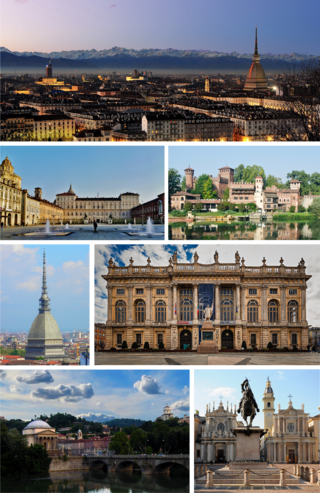
Turin is a city and an important business and cultural centre in Northern Italy. It is the capital city of Piedmont and of the Metropolitan City of Turin, and was the first Italian capital from 1861 to 1865. The city is mainly on the western bank of the Po River, below its Susa Valley, and is surrounded by the western Alpine arch and Superga hill. The population of the city proper is 843,514, while the population of the urban area is estimated by Eurostat to be 1.7 million inhabitants. The Turin metropolitan area is estimated by the OECD to have a population of 2.2 million.

The Pray Codex, also called Codex Pray or The Hungarian Pray Manuscript, is a collection of medieval manuscripts, dated to the late 12th to early 13th centuries. In 1813 it was named after György Pray, who discovered it in 1770. It is the first known example of continuous prose text in Hungarian. The Codex is kept in the National Széchényi Library of Budapest.

The History of the Shroud of Turin begins in the year 1390 AD, when Bishop Pierre d'Arcis wrote a memorandum where he charged that the Shroud was a forgery. Historical records seem to indicate that a shroud bearing an image of a crucified man existed in the possession of Geoffroy de Charny in the small town of Lirey, France around the years 1353 to 1357. The history from the 15th century to the present is well documented.

The Shroud of Turin Research Project refers to a team of scientists which performed a set of experiments and analyses on the Shroud of Turin during the late 1970s and early 1980s. STURP issued its final report in 1981.

The Manoppello Image is a piece of linen cloth depicting the face of Jesus Christ that is stored in a church in the village of Manoppello, Italy. The church, known as Santuario del Volto Santo, is part of a monastery belonging to Capuchin friars. There have been claims that the cloth is the Veil of Veronica.

The Shroud of Turin is a length of linen cloth bearing the imprint of the image of a man, and is believed by some to be the burial shroud of Jesus. Despite conclusive scientific evidence from three radiocarbon dating tests performed in 1988 which resulted in the shroud being dated to 1260–1390 AD, some researchers have challenged the dating based on various theories, including the provenance of the samples used for testing, biological or chemical contamination, incorrect assessment of carbon dating data, as well as other theories. However, the alternative theories challenging the radiocarbon dating have been disproved by scientists using actual shroud material, and are thus considered to be fringe theories.

Sindon, also known as Syndone, was a fine cloth that resembled muslin or cambric. It had multiple applications, including as a material used in furnishing, covering the pyx, and was referenced in the Bible and ancient Greek literature. According to Christian tradition, it was Sindon cloth in which the body of Jesus of Nazareth was shrouded.















